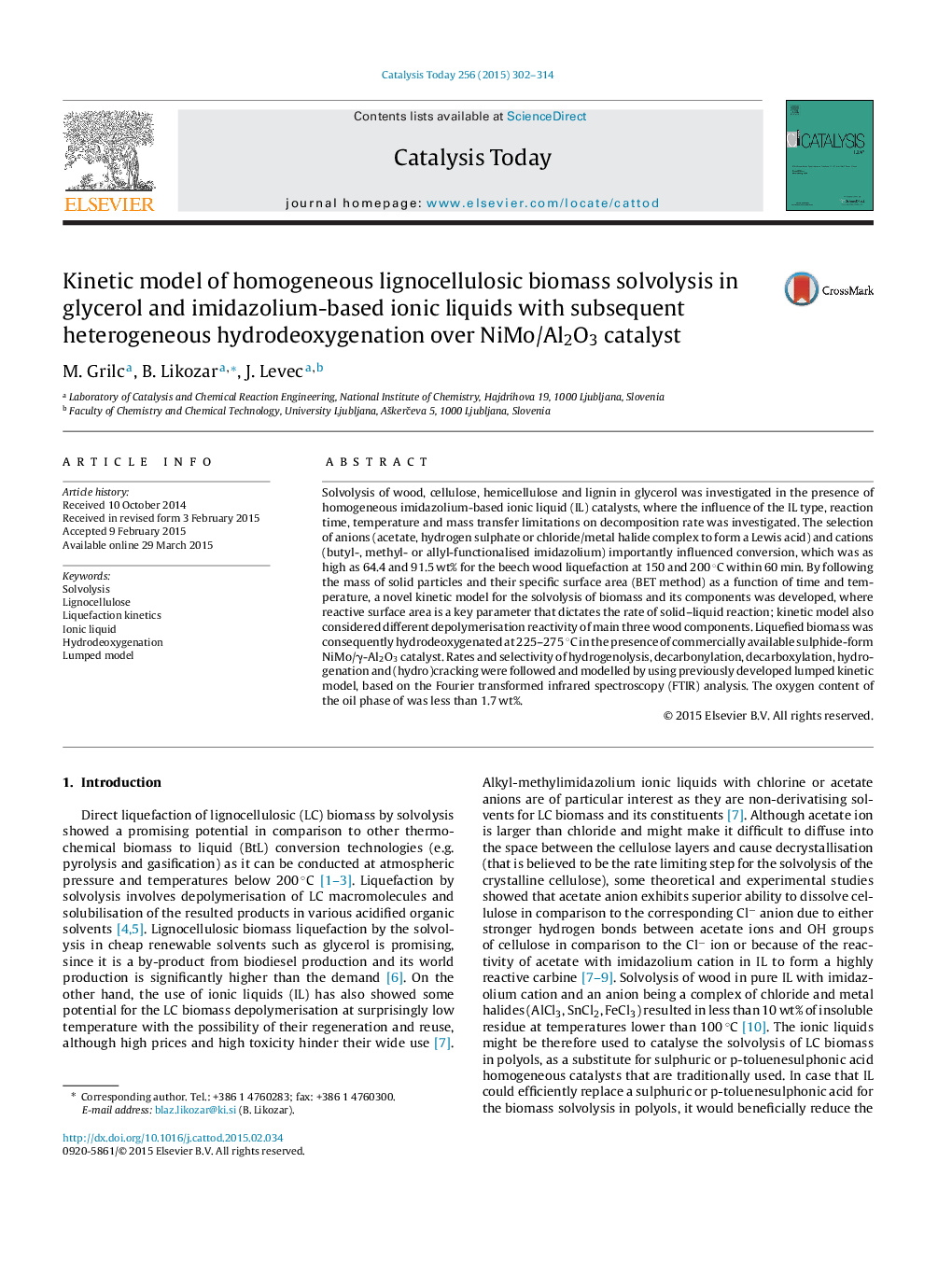| کد مقاله | کد نشریه | سال انتشار | مقاله انگلیسی | نسخه تمام متن |
|---|---|---|---|---|
| 53661 | 46978 | 2015 | 13 صفحه PDF | دانلود رایگان |

• Solvolysis of cellulose, hemicellulose, lignin and wood in ionic liquids and glycerol.
• Simultaneous solid biomass depolymerisation and hydrolysis, followed by deoxygenation.
• Liquefaction model based on lignocellulosic biomass composition, particle size and structure.
• Catalytic hydrodeoxygenation, hydrogenation and hydrocracking of solvolytic oil over NiMo/Al2O3.
• Application of HDO kinetic model based on lumped group reactivity using FTIR analysis.
Solvolysis of wood, cellulose, hemicellulose and lignin in glycerol was investigated in the presence of homogeneous imidazolium-based ionic liquid (IL) catalysts, where the influence of the IL type, reaction time, temperature and mass transfer limitations on decomposition rate was investigated. The selection of anions (acetate, hydrogen sulphate or chloride/metal halide complex to form a Lewis acid) and cations (butyl-, methyl- or allyl-functionalised imidazolium) importantly influenced conversion, which was as high as 64.4 and 91.5 wt% for the beech wood liquefaction at 150 and 200 °C within 60 min. By following the mass of solid particles and their specific surface area (BET method) as a function of time and temperature, a novel kinetic model for the solvolysis of biomass and its components was developed, where reactive surface area is a key parameter that dictates the rate of solid–liquid reaction; kinetic model also considered different depolymerisation reactivity of main three wood components. Liquefied biomass was consequently hydrodeoxygenated at 225–275 °C in the presence of commercially available sulphide-form NiMo/γ-Al2O3 catalyst. Rates and selectivity of hydrogenolysis, decarbonylation, decarboxylation, hydrogenation and (hydro)cracking were followed and modelled by using previously developed lumped kinetic model, based on the Fourier transformed infrared spectroscopy (FTIR) analysis. The oxygen content of the oil phase of was less than 1.7 wt%.
Figure optionsDownload high-quality image (218 K)Download as PowerPoint slide
Journal: Catalysis Today - Volume 256, Part 2, 1 November 2015, Pages 302–314